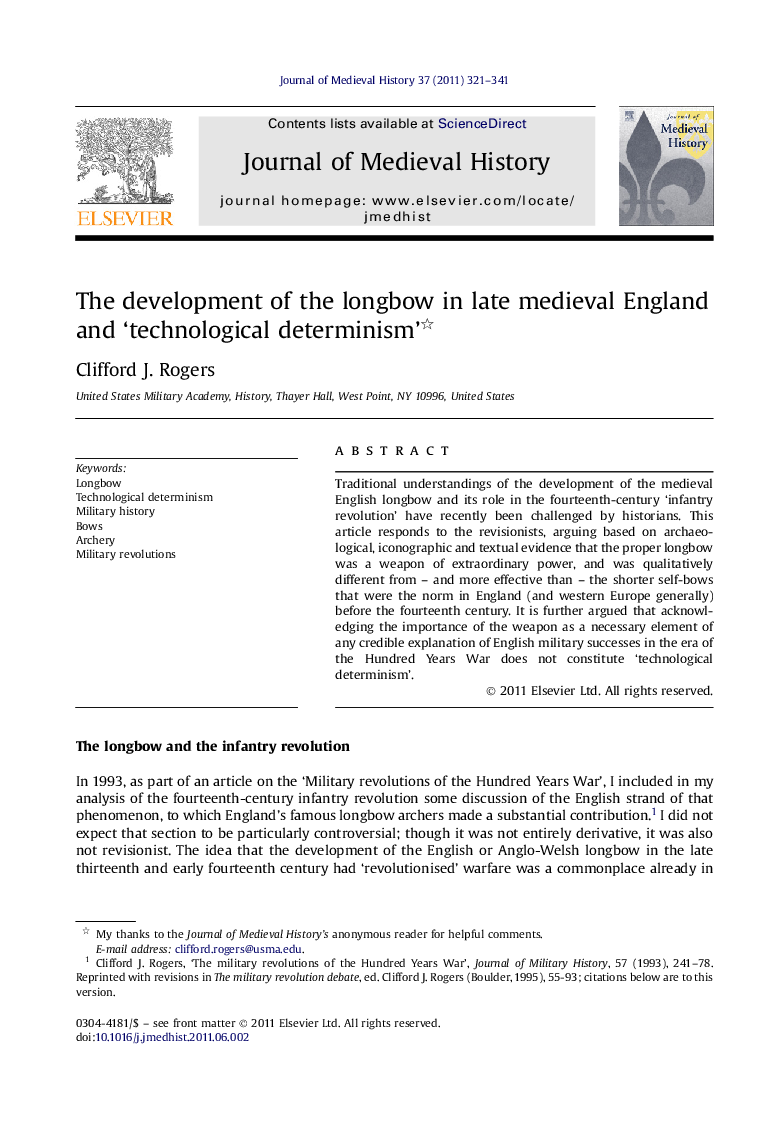| Article ID | Journal | Published Year | Pages | File Type |
|---|---|---|---|---|
| 1159685 | Journal of Medieval History | 2011 | 21 Pages |
Traditional understandings of the development of the medieval English longbow and its role in the fourteenth-century ‘infantry revolution’ have recently been challenged by historians. This article responds to the revisionists, arguing based on archaeological, iconographic and textual evidence that the proper longbow was a weapon of extraordinary power, and was qualitatively different from – and more effective than – the shorter self-bows that were the norm in England (and western Europe generally) before the fourteenth century. It is further argued that acknowledging the importance of the weapon as a necessary element of any credible explanation of English military successes in the era of the Hundred Years War does not constitute ‘technological determinism’.
► There is no solid evidence for the use of longbows in Britain from AD1000–1300. ► Archaeology and texts prove ordinary bows (under 5’) were in use. ► Efficacy and iconographic evidence suggest the absence of longbows before 1300. ► Longbows’ long draw imparted great kinetic energy and momentum to arrows. ► Recognising technology as important is not ‘technological determinism.’
